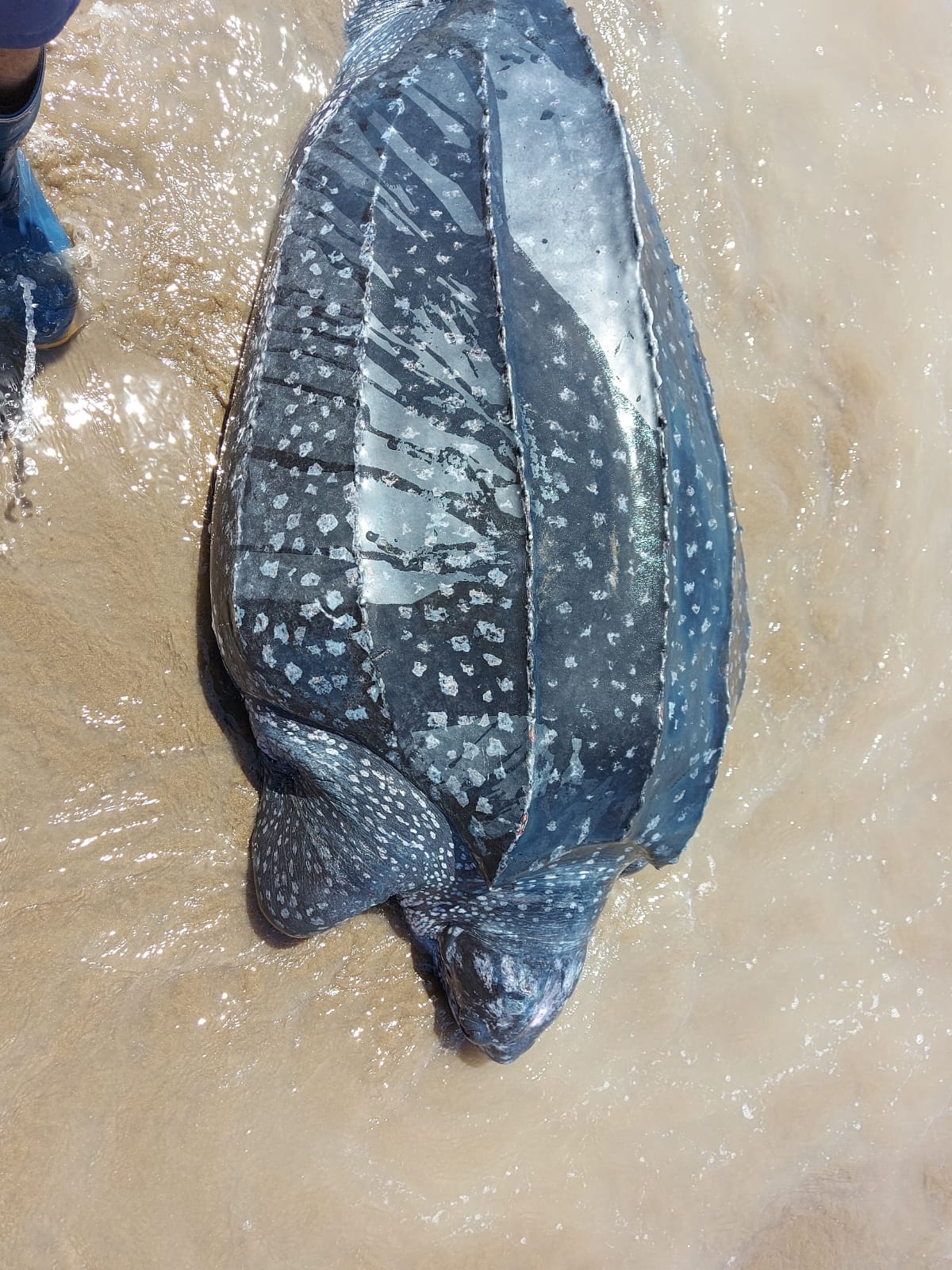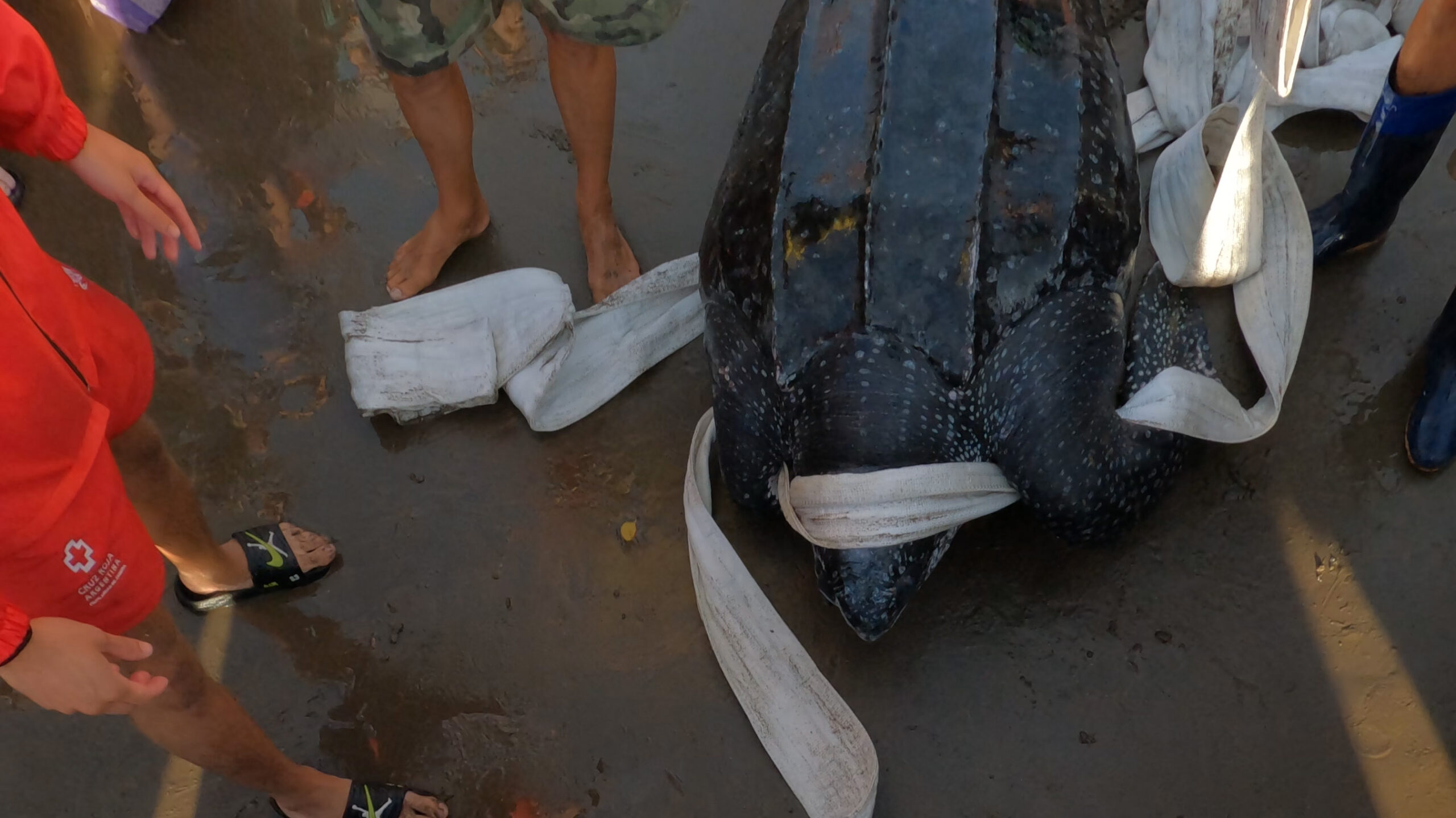During the course of a week, an alarm was raised due to the appearance of seven **turtles [dead on the coast](https://noticiasambientales.com/animales/muerte-de-peces-en-calamuchita-por-la-contaminacion-en-el-embalse-de-rio-tercero/)** on the Argentine Atlantic coast. These were specimens of the **Leatherback** species, sighted between **February 9 and 15**.
This occurred in different locations within the **Partido de la Costa**. In all cases, the animals were found dead when the **Mundo Marino Foundation** arrived at the scene.
The Leatherback turtle (*Dermochelys coriacea*) is a species classified as “vulnerable” in terms of its conservation status, according to the **International Union for Conservation of Nature (IUCN)**.
## Dead Turtles on the Atlantic Coast: the Cases

In all alert cases, the Mundo Marino Foundation responded to calls from **tourists or lifeguards** who reported the strandings.
Only the turtles found in **La Lucila del Mar** were taken to the organization’s headquarters for a necropsy to determine the causes of their death.
In the other cases, the animals were in an advanced state of decomposition that **prevented the collection of samples**.
### Chronology of Appearances:
– The first two findings occurred on February 9 and 12 in La Lucila del Mar.
– The third case was recorded on February 13 in Costa Azul.
– Then, two more cases were reported on February 14: one in San Clemente and the other in Las Toninas.
– Finally, on Saturday, February 15, two more Leatherback turtles were found in Costa del Este and Nueva Atlantis.
– Previously, another record of a turtle of this species was made on January 28 in Costa Chica.
## What Specialists Say

“It was a male and a female, each weighing approximately **200 kilos**, on which we were able to perform a necropsy. They were in **good body condition and an initial state of decomposition**, allowing us to take samples and analyze their internal organs,” stated **Juan Pablo Loureiro**, a veterinarian and technical director of the Mundo Marino Foundation.
“We presume, as the primary hypothesis, that it was a death by **drowning in fishing nets**. Both turtles even had food remains in their stomachs, indicating they had eaten before their death,” he added.
“The samples will be sent to the laboratory of the Faculty of Veterinary Sciences of the National University of La Plata for analysis,” Loureiro noted.
On the other hand, **Karina Álvarez**, a biologist and conservation manager at the foundation, stated: “The sighting of live animals of this species usually occurs in November and March and is also related to the amount of jellyfish they can find, as they are their main source of food, among other **types of gelatinous fauna**.”
Later, between March and May, as she indicated, dead Leatherback turtles appear on the beach. “These animals, in general, are found in good body condition and we presume that their cause of death is **drowning due to entanglement in fishing nets of ships offshore**. But, due to their advanced state of decomposition, it is very difficult to confirm,” she stated.
## What Leatherback Turtles Are Like

As the only representatives of the Dermochelyidae family, Leatherback turtles are different from other better-known turtles **in that they do not have a shell**. Instead, they have a **thick layer of skin similar to leather** with seven longitudinal ridges.
That’s why they are also known as the “**seven-ridged turtle**.” They can measure up to two meters and weigh 500 kilos. They have a wide distribution in oceans worldwide, even enduring cold-water temperatures.
It is a species that is **vulnerable** in terms of its conservation status, according to the **International Union for Conservation of Nature (IUCN)**.
As mentioned by the foundation, like other species of sea turtles that venture into the **Rio de la Plata Estuary** and the waters off the Buenos Aires coast, they are **threatened by interactions with fishing nets**.
Have you checked out our YouTube channel? Subscribe now!

